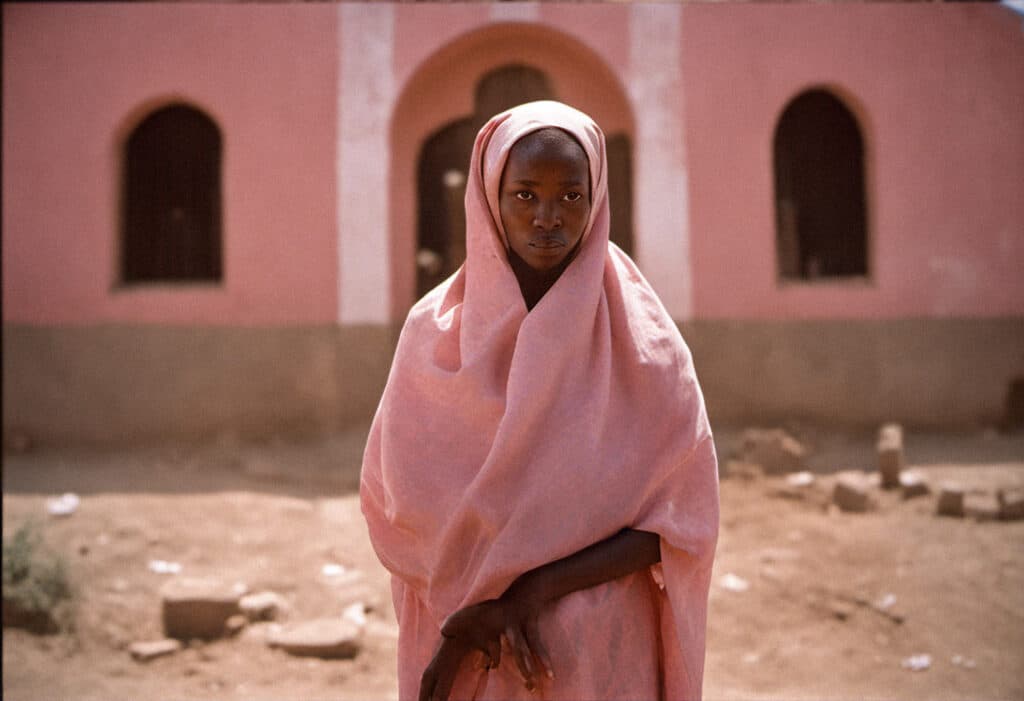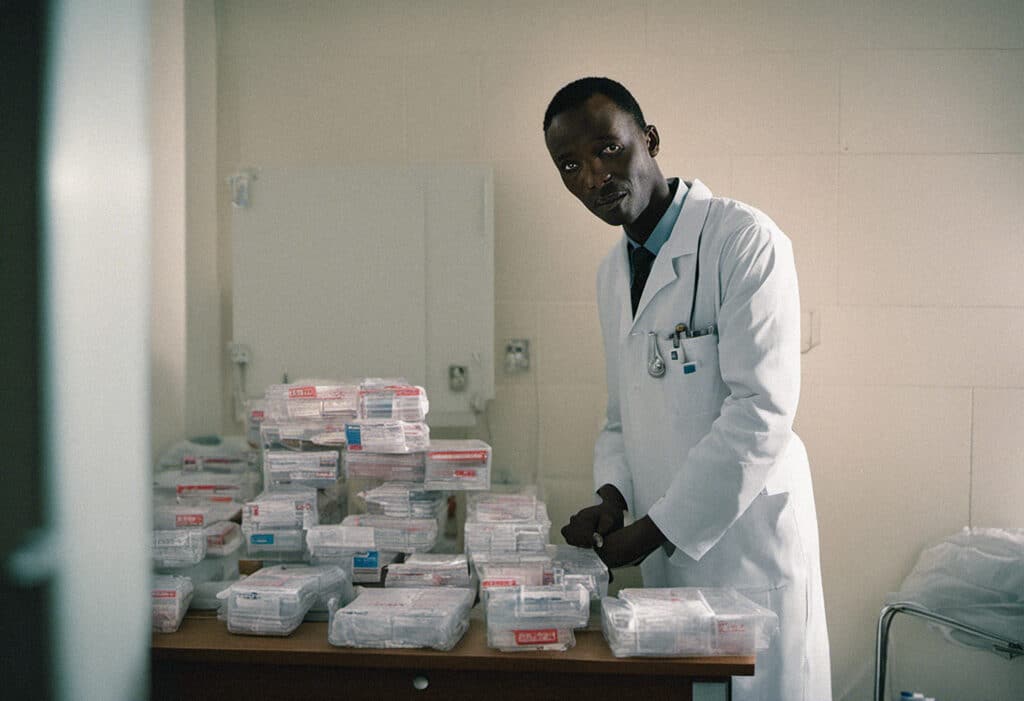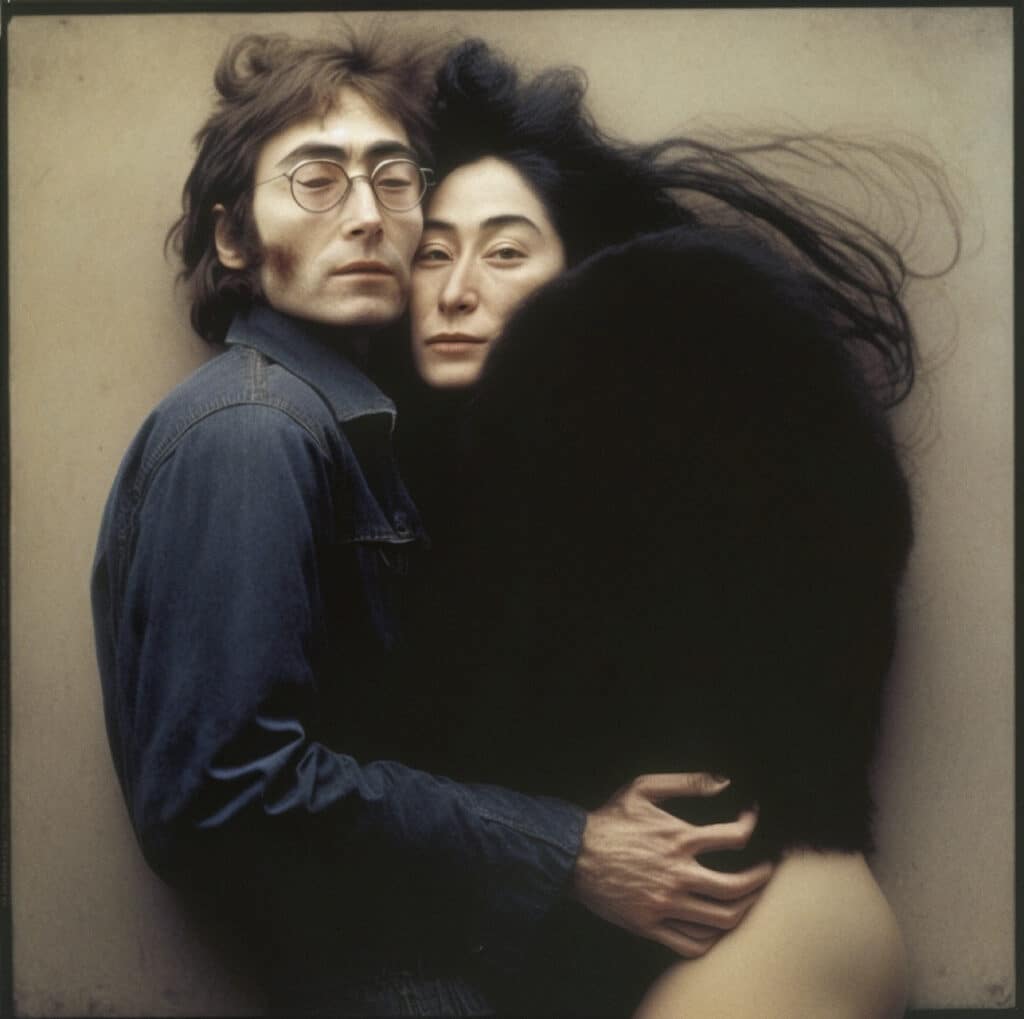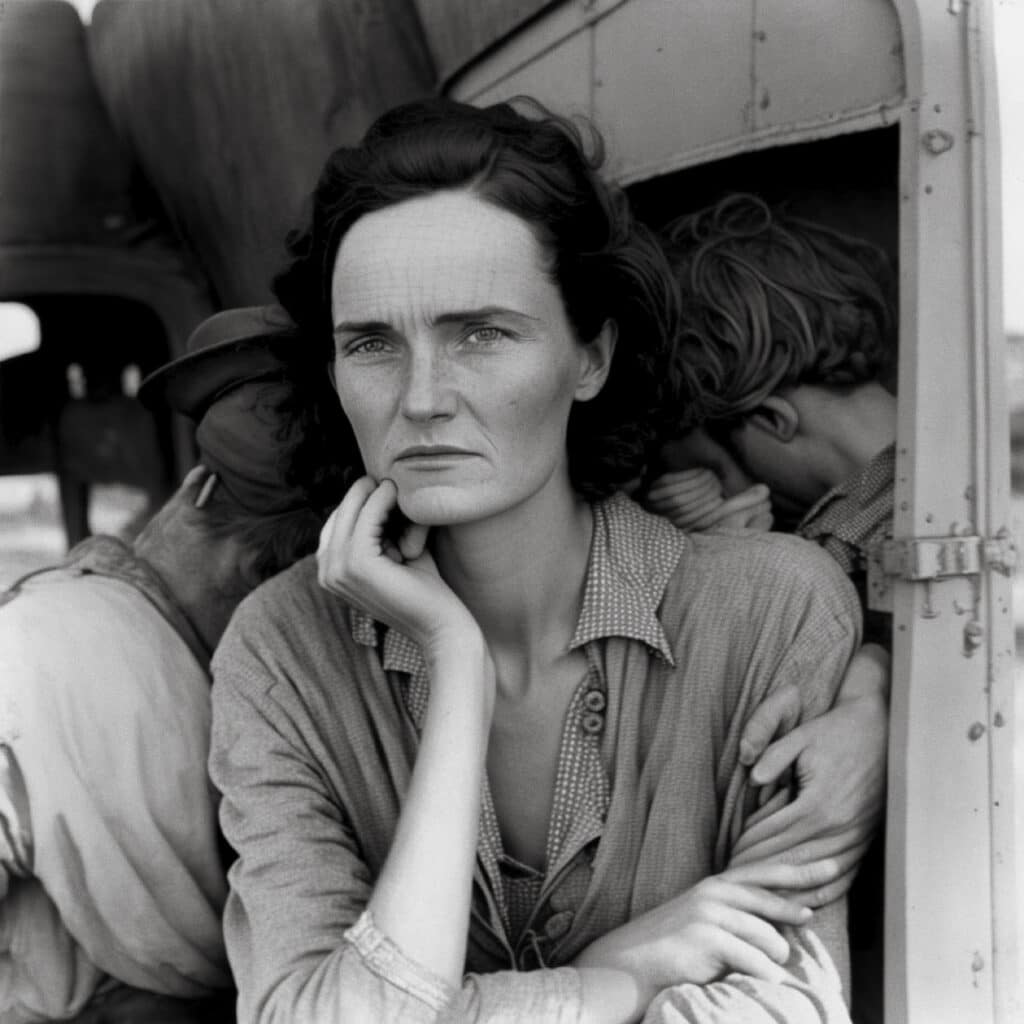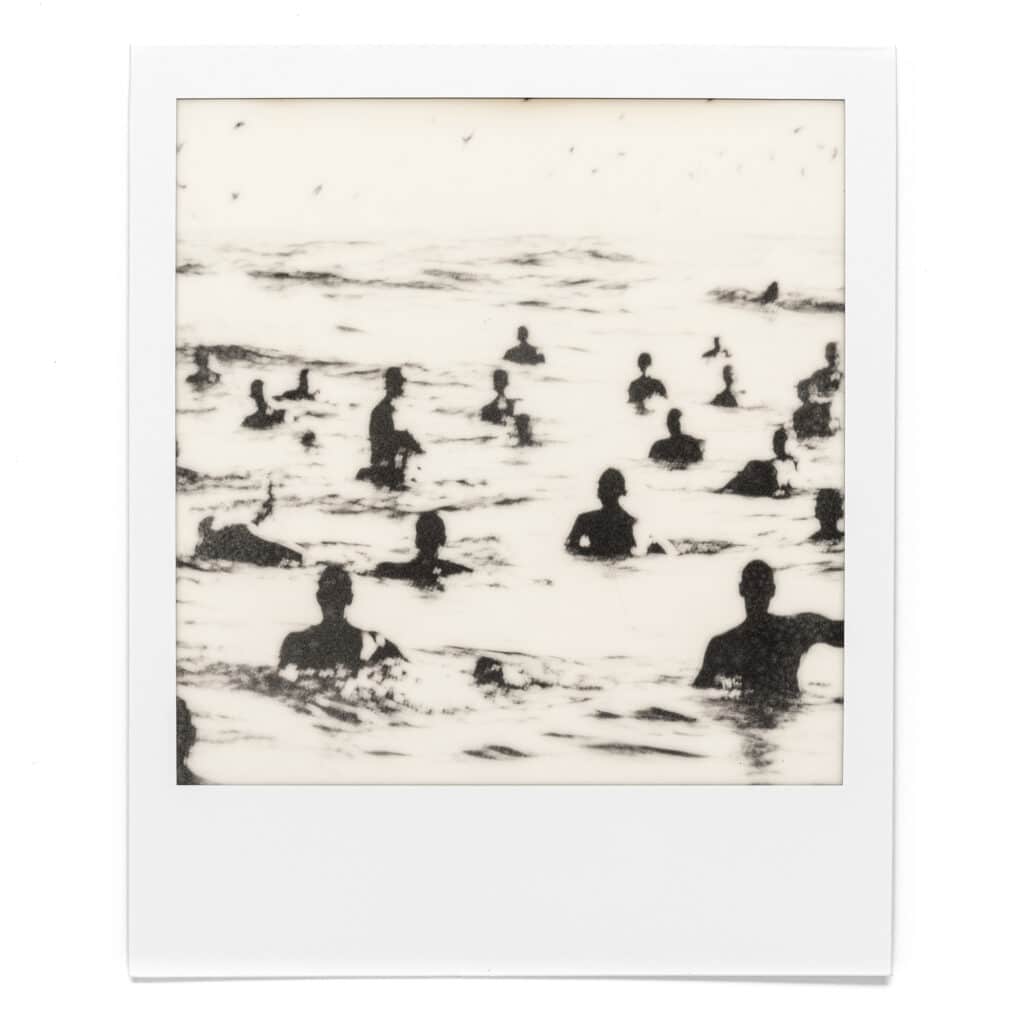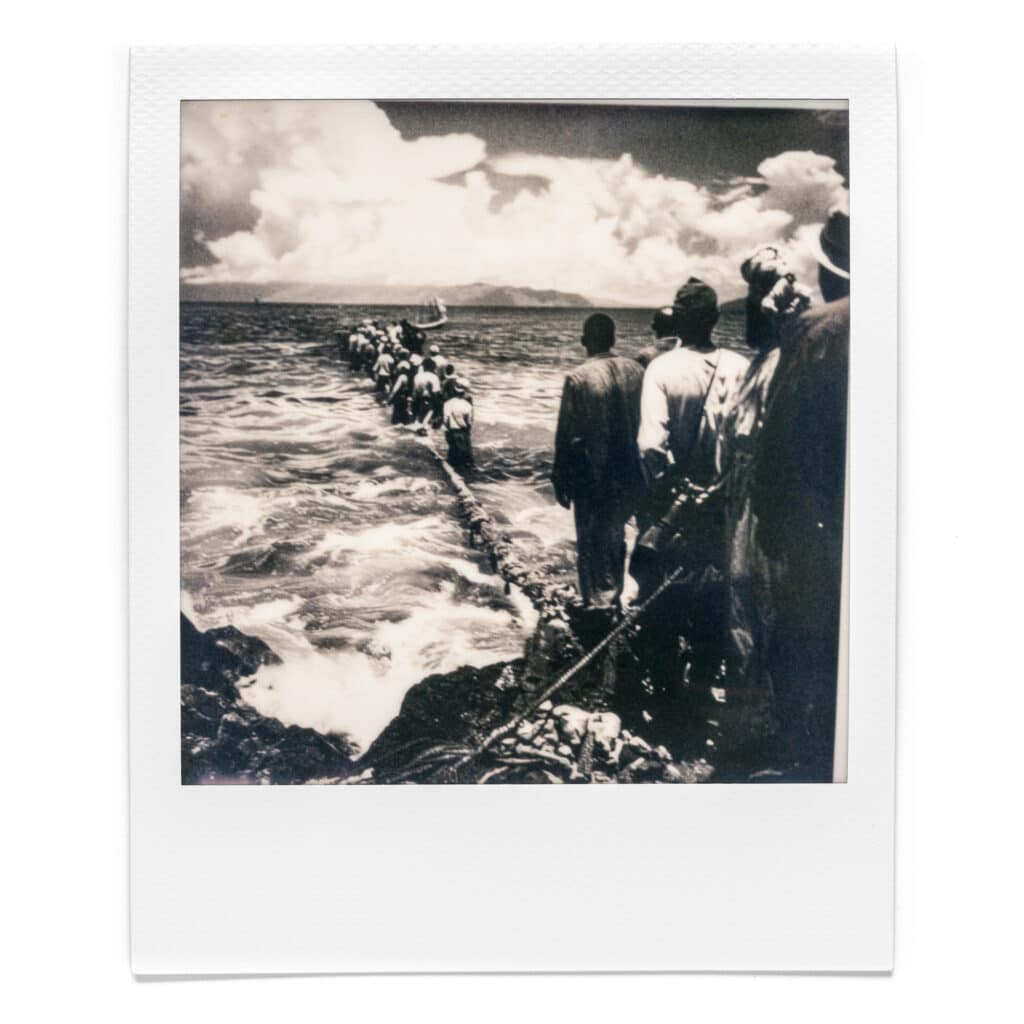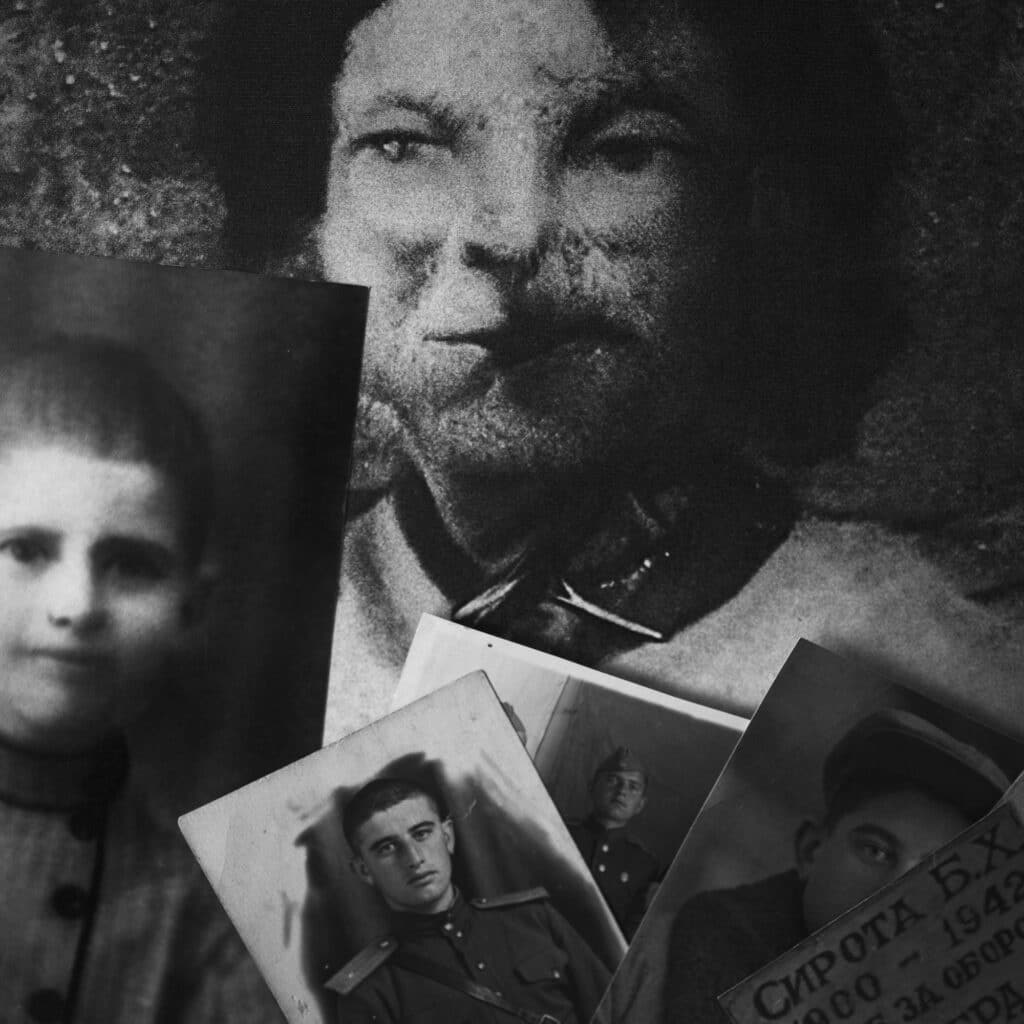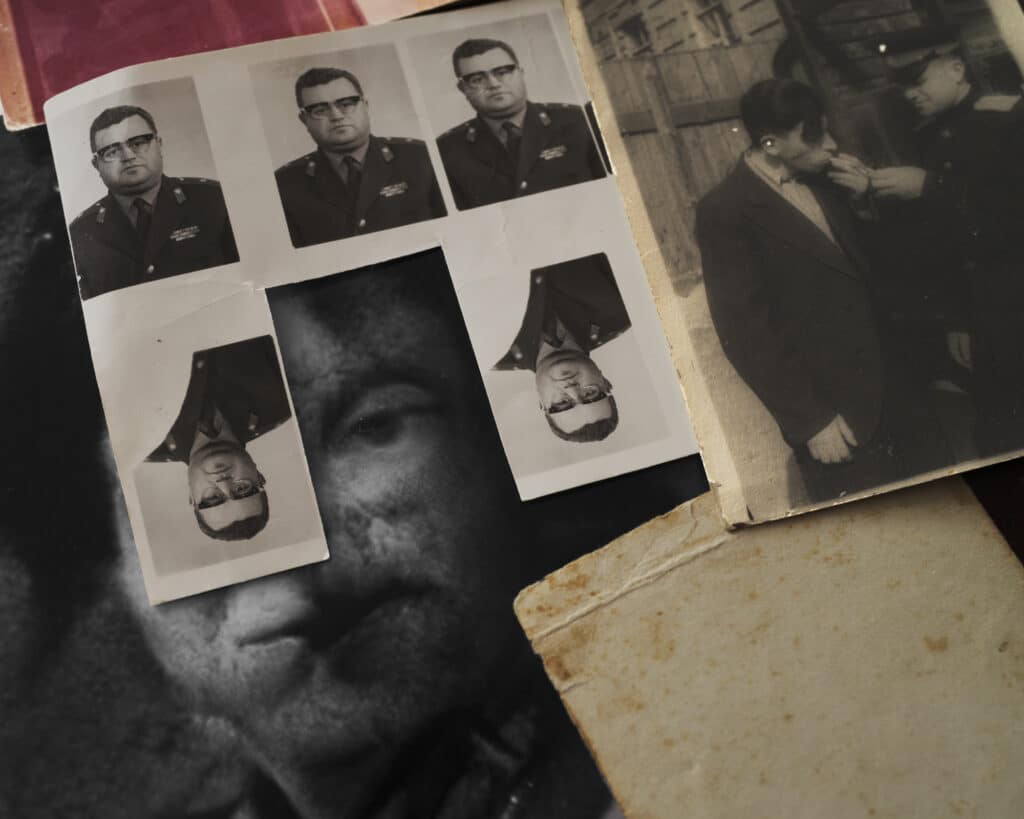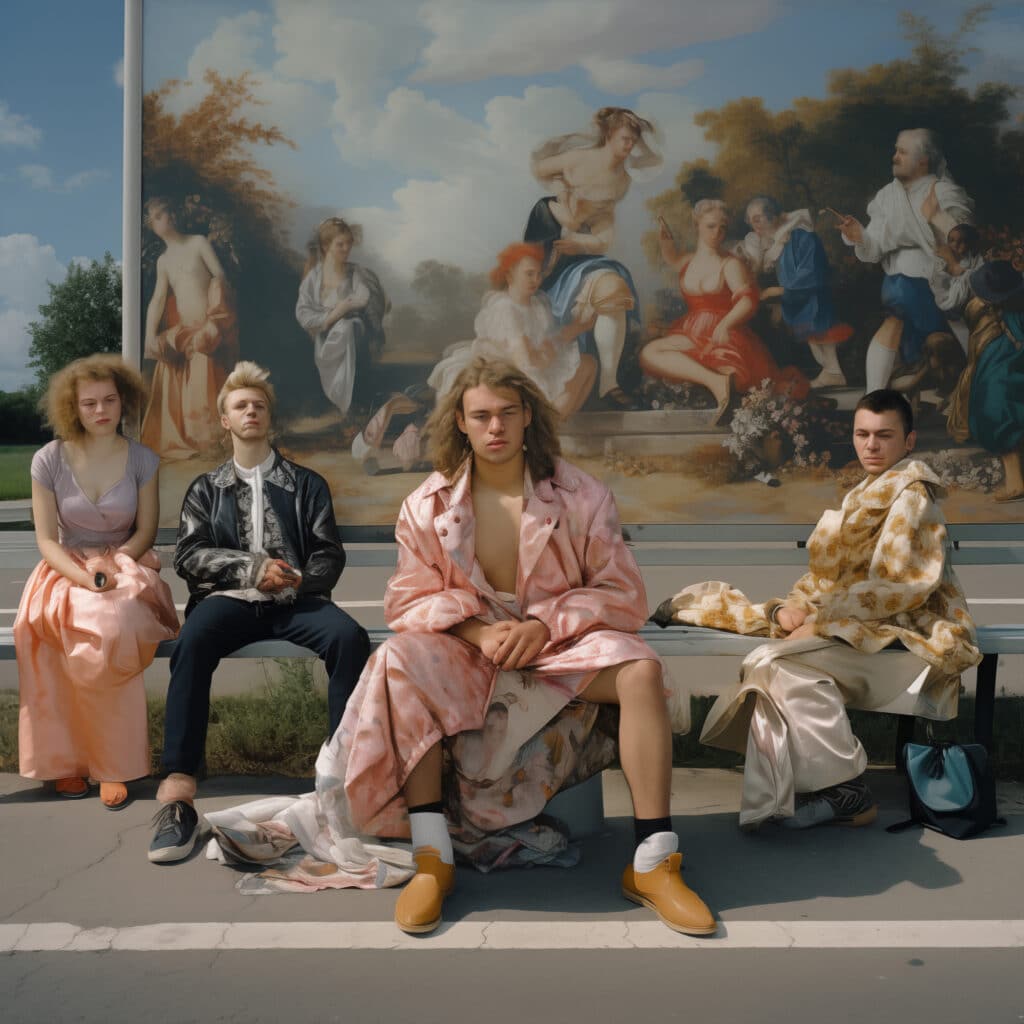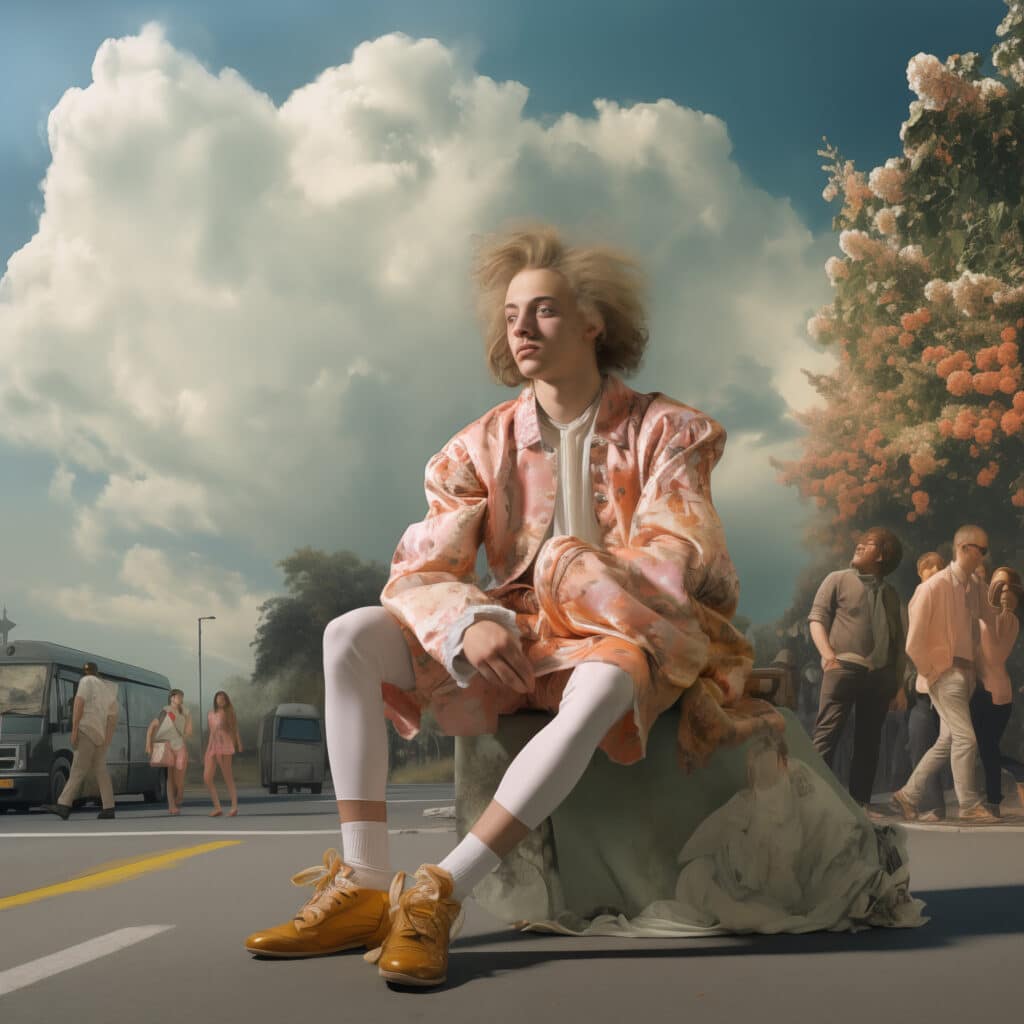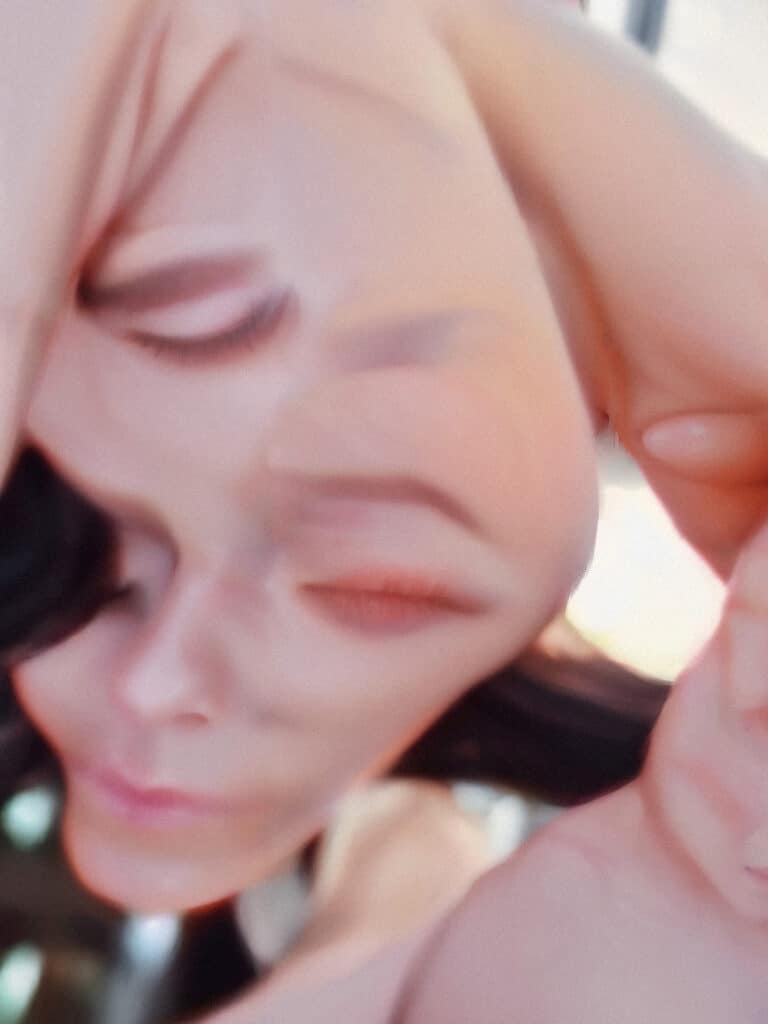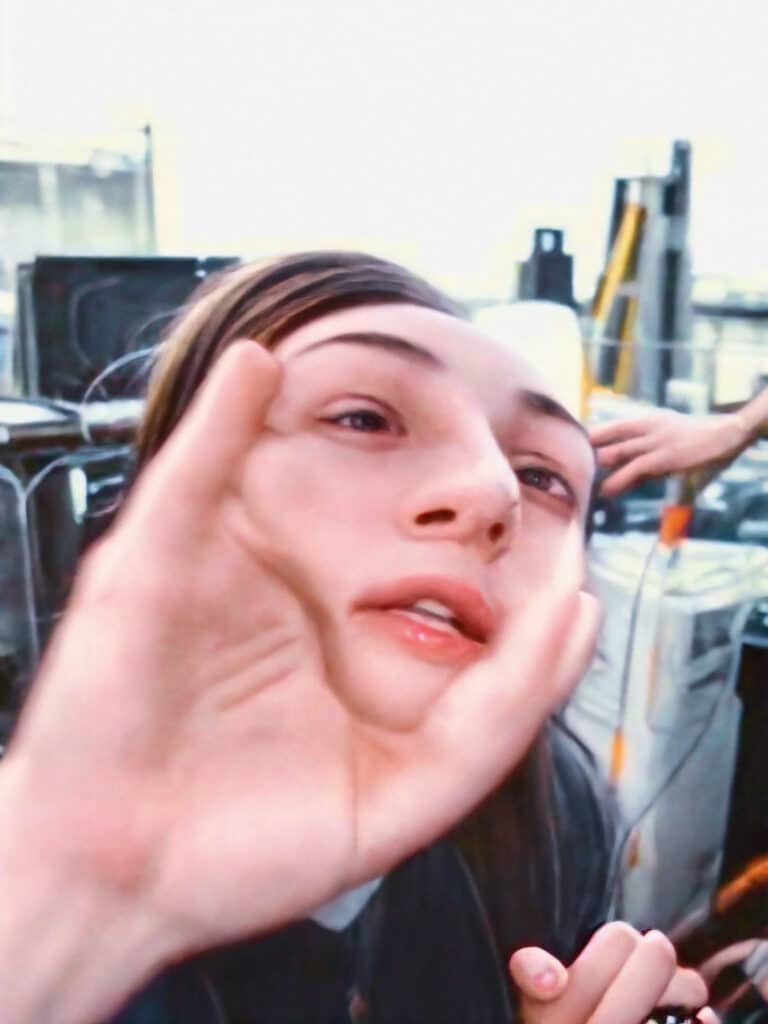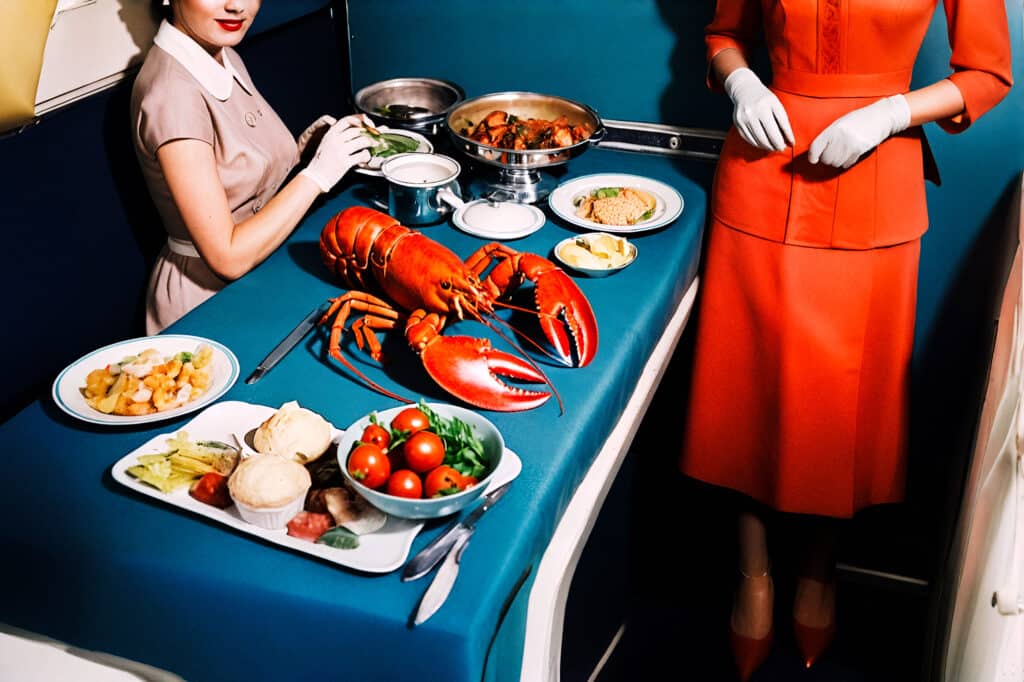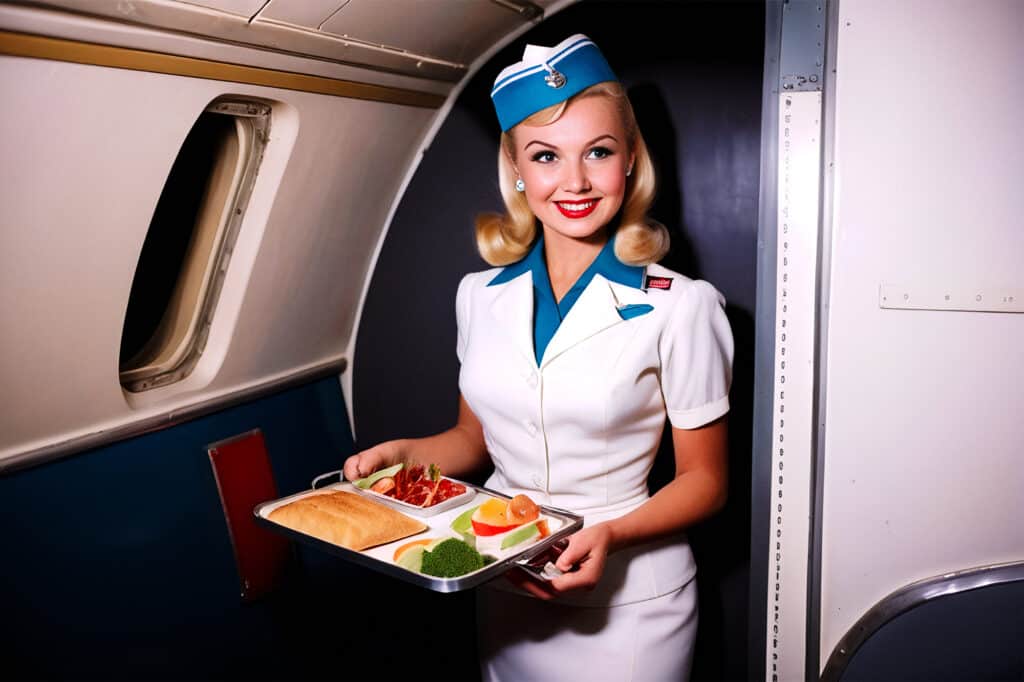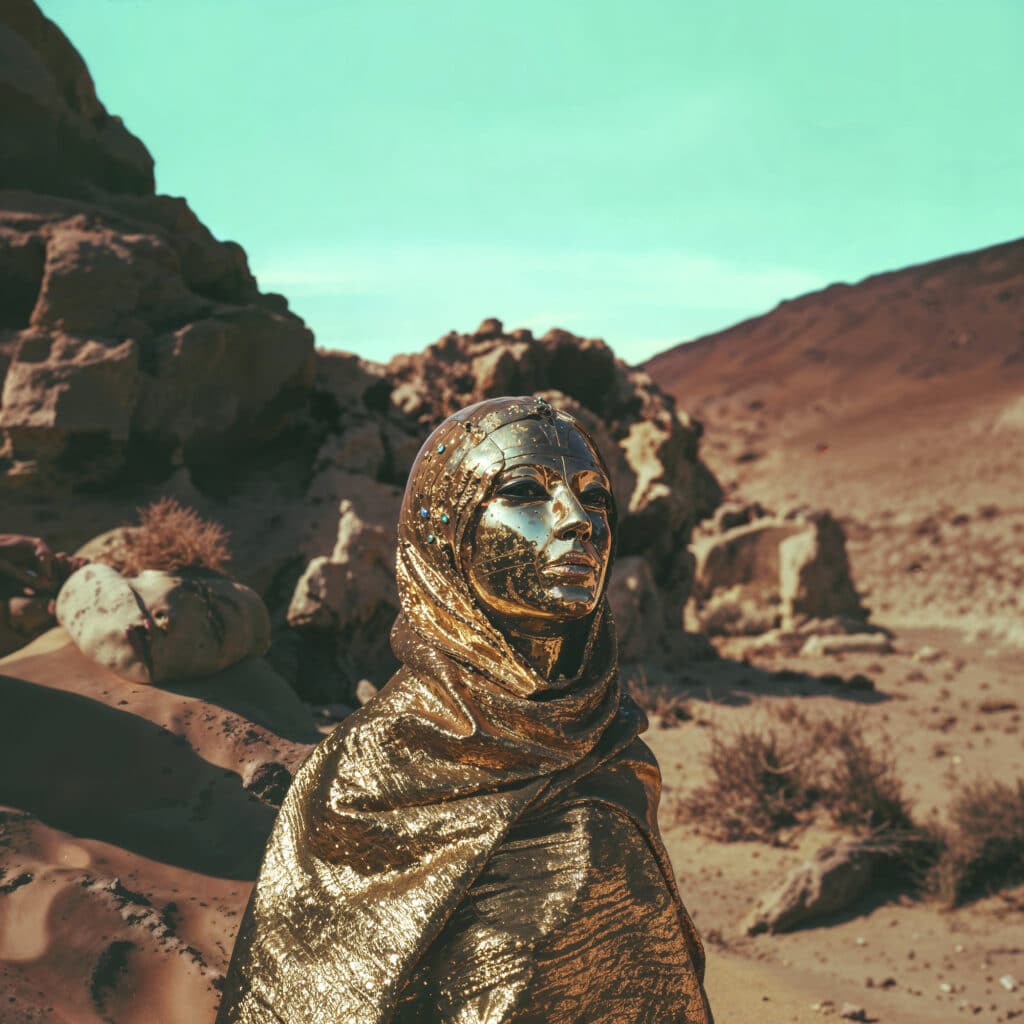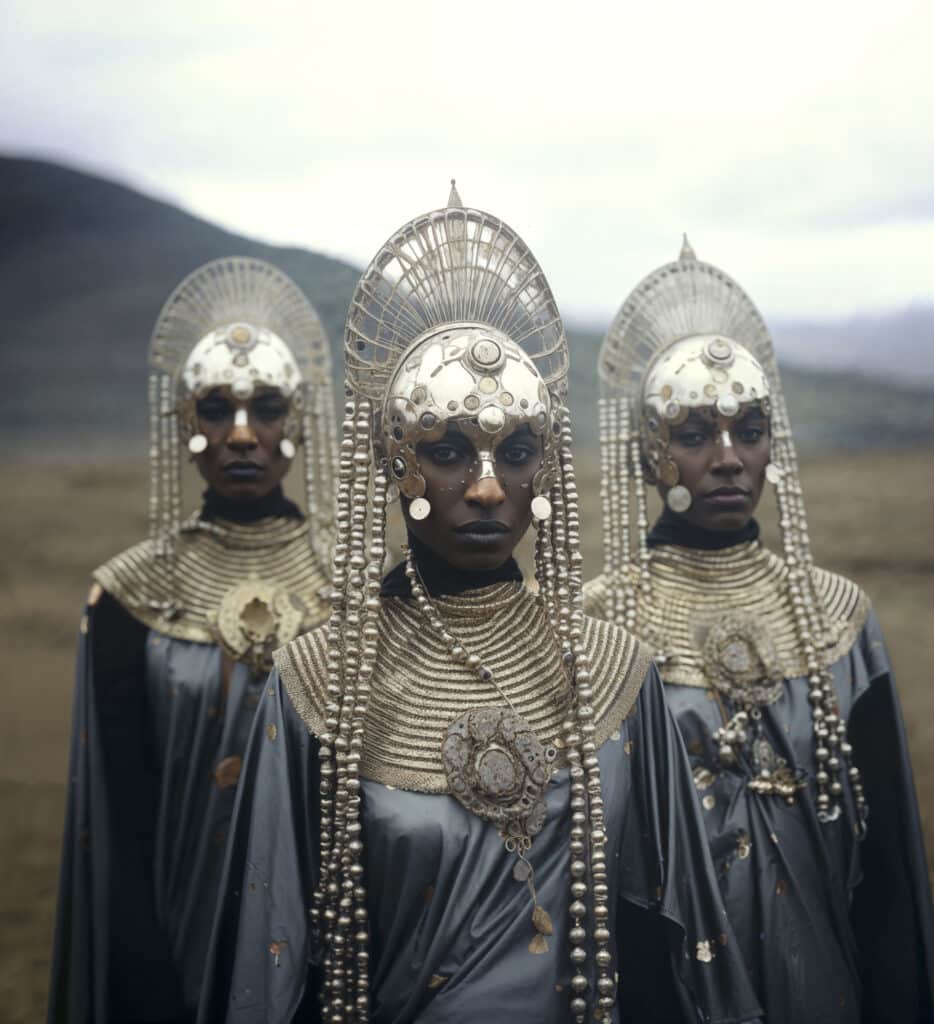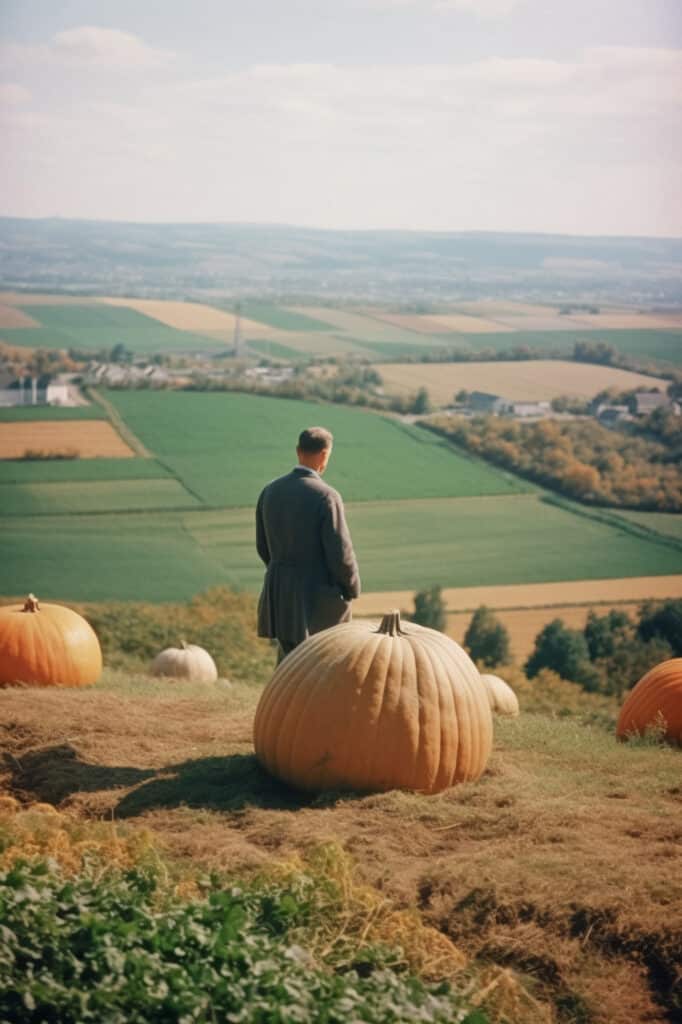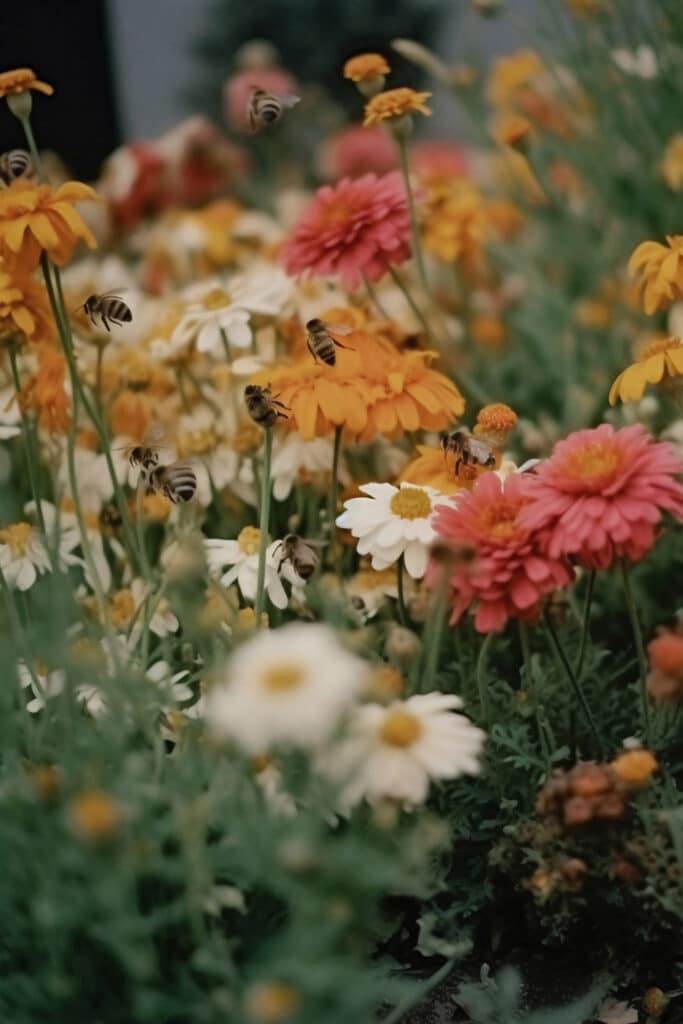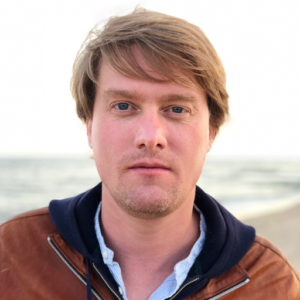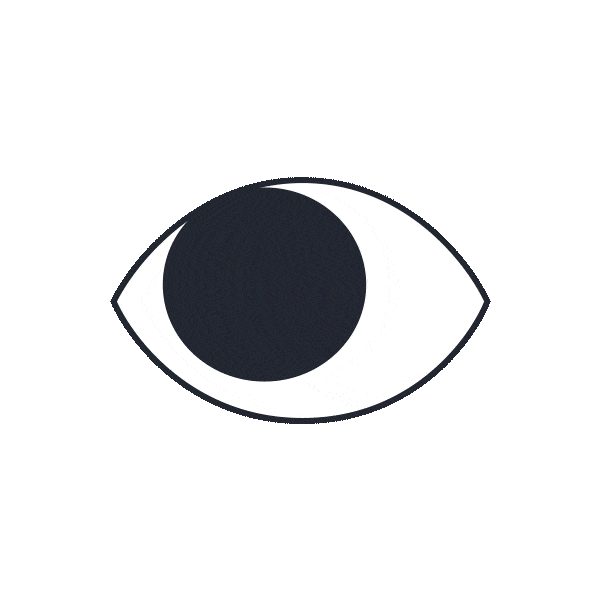With a rich and thoughtful program and a socially vibrant, benevolent atmosphere, Le Hangar in Brussels has, over the years, established itself as one of Europe’s leading photography exhibition spaces. At the start of this year, the art center continues to assert its identity and embrace creative transformations and societal shifts with nothing less than the first-ever collective exhibition entirely dedicated to images created using artificial intelligence. A first in Europe, and also globally, it precedes another major exhibition set to take place at Jeu de Paume in Paris in three months.
“Diving into the universe of artificial intelligence to explore its intersections with photography, a discipline we have championed for nine years at Le Hangar, could be seen as a rupture, even a betrayal,” says Delphine Dumont, the director of Le Hangar. “However, it was a necessity, almost a mission: to take on the challenge of dialoguing between tradition and innovation, and to explore the future of the image. To build this project, we adopted a hybrid methodology: an international call for projects to invite fresh ideas, combined with a rigorous selection of works identified during our research.”
“AImagine – Photography and Generative Images”, co-curated by historian and exhibition curator Michel Poivert and Le Hangar’s team, thus delves into the intersection of artificial intelligence and photography, showcasing the work of 18 international artists. The exhibition highlights eclectic and innovative practices, where each work challenges the photographic medium while reinterpreting visual codes. Here, AI does more than assist the artist: it becomes both a mirror of our imaginations and a tool to push creative boundaries. “Who’s afraid of artificial intelligence?” asks Michel Poivert. “Photographers, perhaps, but not all of them! Generative algorithms allow us to explore our imagination. By tapping into latent data spaces, they reveal the content of our visual culture. Isn’t this, in a sense, like photographing our collective memory?”
From photographer to promptographer
The central idea of the exhibition lies in the potential of artificial intelligence to “revisit” cultural history. The artist duo Brodbeck & de Barbuat, for instance, presents “A Parallel History”, a series of images inspired by photography classics. “What interests us is how AI interprets visual icons while revealing its own limitations,” they explain. In their images, AI flaws—blurry faces, multiple fingers—become narrative elements that challenge our expectations of authenticity. “AI acts as a mirror of our own cultural biases, reflecting historical gaps in the datasets it uses,” they add. One of their works, inspired by an iconic portrait of Yoko Ono and John Lennon, underscores prejudices through a perplexing result. “That famous photo of Yoko Ono and John Lennon was taken shortly before his death. The algorithm gave us very morbid portraits of John Lennon, almost as if he were already dead. It felt somewhat prophetic. Originally, it’s Lennon who’s nude in the photo, but the AI refused to render him that way. Instead, it showed partial nudity, like a jacket slipping off his shoulder, but never fully nude. These AI models, developed by American companies, clearly reflect a concern for political correctness.”
Jordan Beal deconstructs colonial visual codes with his series entitled “Lineaments”. Revisiting landscapes of Martinique, he creates hybrid images oscillating between dream and reality. “These landscapes are spaces of repressed memory, worlds the AI seems to unearth without understanding their full historical depth,” explains Beal. He highlights AI’s capacity to transform our perception of the past: “What AI produces is simultaneously evident and enigmatic, as if it’s trying to fill the silences of history with inadvertent poetry.”
Similarly, to fill the void left by the loss of his grandfather, Alexey Yurenev embarked on a journey through history, space, and time to renegotiate the narrative of his grandfather’s wartime experience. Alexey Yurenev knew that his grandfather was a war hero, but he wondered what that truly meant. “For me, it was a matter of silence. My grandfather’s silence. I wanted to know what it felt like to be at war.” In search of traces of his past, he examined archives and family albums where the war was captured in studio portraits, detached from reality. By training a model on 35,000 World War II images, the machine produced war images stripped of glory, offering new interpretations through fabricated but arguably realistic depictions of war. AI became a tool to fill the gaps in the archive, generating images that convey psychological narratives rather than direct testimonies.
In Justine Van den Driessche’s work, AI is integrated into an aesthetic that merges baroque painting with modernity. With her series “The Progress,” she juxtaposes contemporary attitudes with the visual codes of art history. “The idea was to create a unique aesthetic, playing on the anachronisms between classical painting and modern photography,” she explains. The result is beautiful: rich compositions where light and textures interact to blur the boundaries between eras. “For me, AI is an ideal medium to articulate these different codes and reinvent temporalities.”
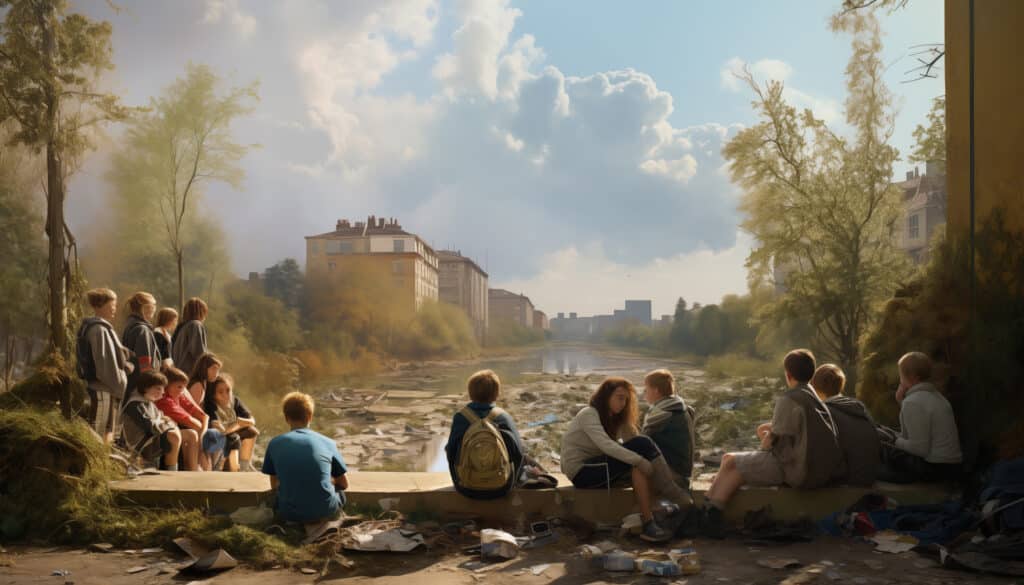
The interactive installation Protomaton by François Bellabas directly engages the spectator. Visitors are invited to stand before a camera that instantly modifies their faces with six levels of alterations, from minimal to extensive. An AI-powered photo booth that not only transforms your face but also adds characters, such as a dog. The result is often humorous. “What interests me is the process of alteration. AI transforms our faces into hybrid creatures, but these anomalies reveal our own biases and perceptions,” the artist states. By playing with algorithmic constraints, Bellabas creates portraits that oscillate between caricature and introspection. “AI becomes a prism through which we rediscover our visual identity.”
In another series that invokes the past, our imagination, and nostalgia, Pascal Sgro revisits the 1950s by creating a fictional airline: Cherry Airlines. This era, when air travel symbolized progress and elegance, is reimagined. Each image is recreated with AI, further blurring the line between reality and invention. “Cherry Airlines reflects contemporary society, where the pursuit of luxury comes at the expense of the planet. Since the 1950s, the quest for comfort has fueled the climate crisis, with aviation playing a key role. By juxtaposing idealized air travel luxury with current environmental realities, the project highlights the paradoxes of consumer culture.”
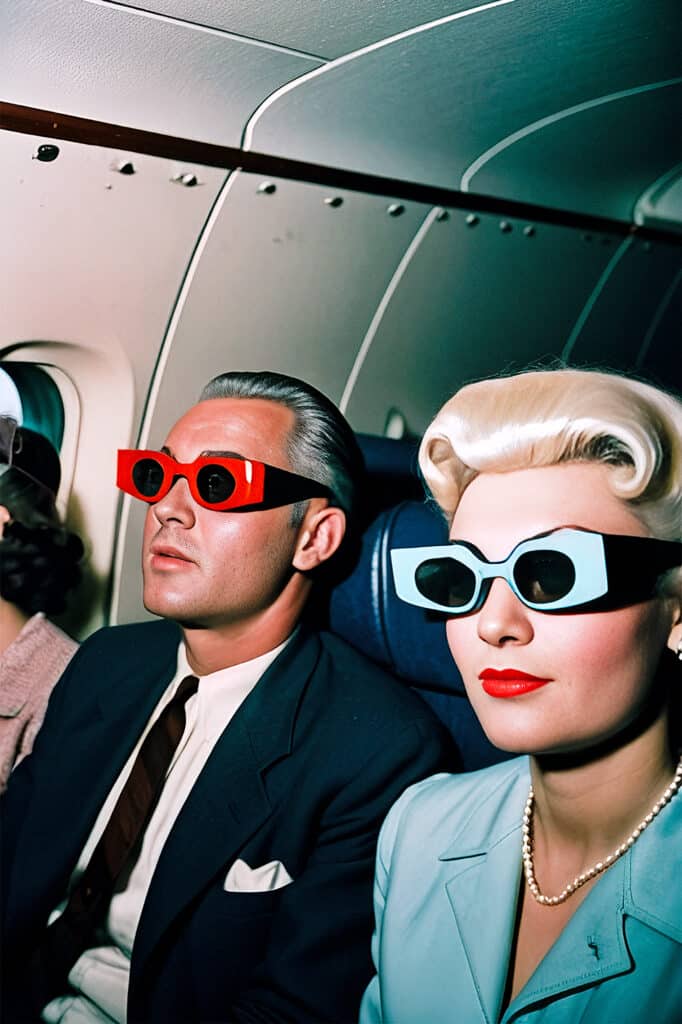
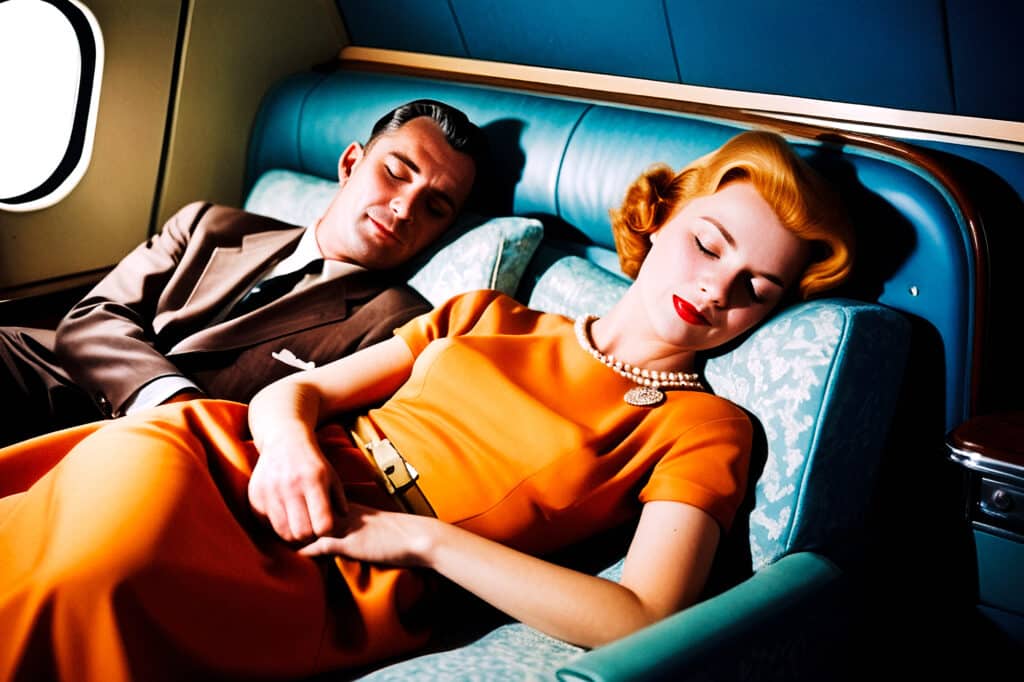
In a similar approach, Michael Christopher Brown, with “90 Miles,” reimagined the journey of Cuban migrants. This series from 2023, initiated before the democratization of AI in artistic practices, sparked fierce controversy for its hybrid approach, blending photojournalism with artificial creation. Critics accused Brown of intentionally blurring the lines between reality and fiction, exploiting human suffering for aesthetic purposes. Now revisited, the series offers a poignant reflection on the notions of truth and representation. “The journey of these individuals is filled with hope but also disillusionment. AI, by occasionally distorting reality, reinforces the feeling of an unattainable dream.”
While the creative potential of AI-generated imagery is no longer in question, the phenomenon continues to provoke real concern among photographers and in the world of photography, particularly when it is used to depict reality or provide testimony. This photorealism is widespread on the internet, often disseminated by individuals outside the industry, sometimes for misleading purposes.
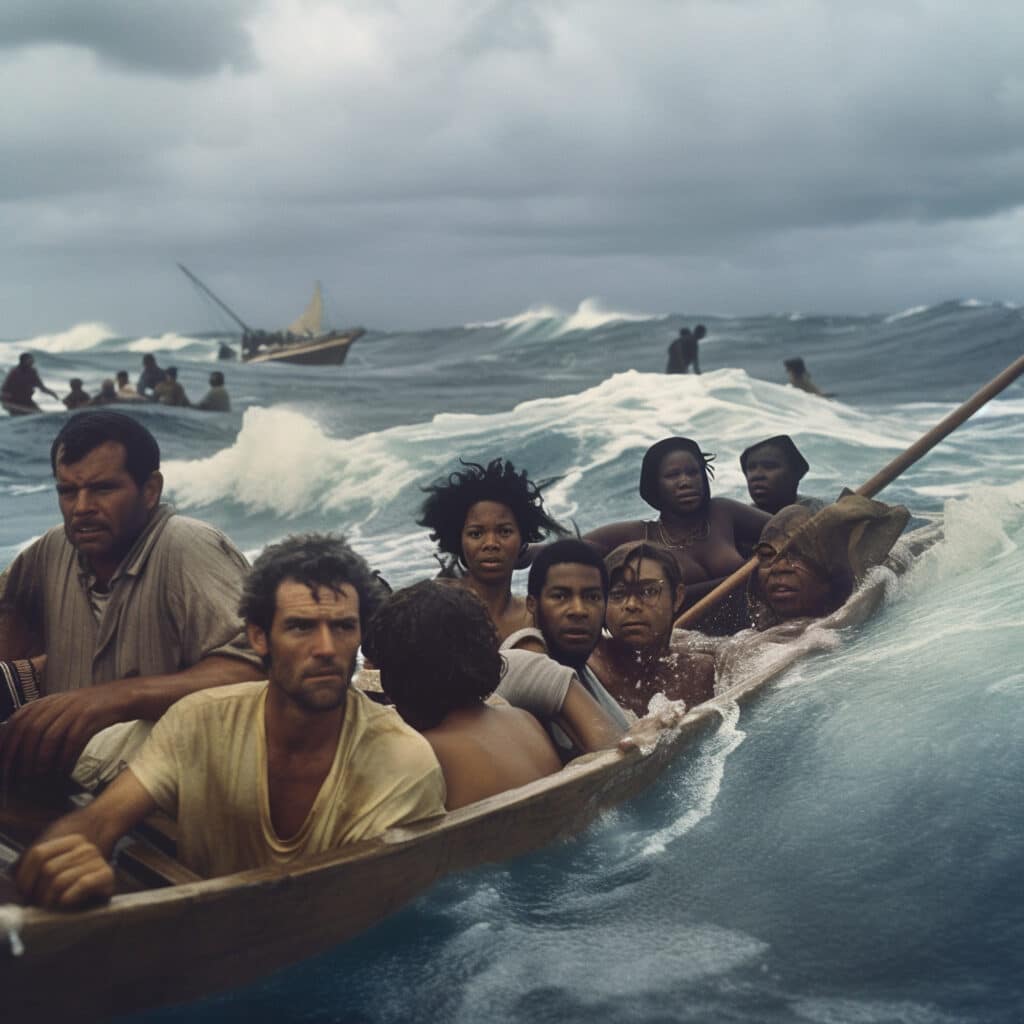
The phenomenon reminds us that AI is merely a tool and that this tool can be used and perceived in various ways. In comparison, knowing how to write has never made someone a recognized author, just as knowing how to take a photograph has never made someone a recognized photographer. On the dangers of AI-generated photorealism, Michel Poivert suggests a solution: “I’d like to revisit an idea proposed by Philippe Chancel, who told me: It’s absolutely essential for the audience to know whether or not they’re dealing with something altered by AI, much like labeling for processed food. There should be a label for reporters, for photojournalists, and perhaps even for artists at some point when they’re presenting documentary work, indicating whether the content was generated by AI or not. It would also be a way to educate audiences, especially younger ones, who will grow up with AI and may not inherently distinguish between the two.”
AI, a medium of the future?
While this exhibition explores the possibilities offered by AI, it also raises questions about its future role. Delphine Diallo, with “Kush”, uses AI to imagine a decolonized future where ancestral traditions merge with modernity. “AI becomes a tool for cultural healing, enabling us to transcend past traumas,” she explains. Her images, imbued with mystical symbols and vibrant colors, transport viewers to another temporal dimension.
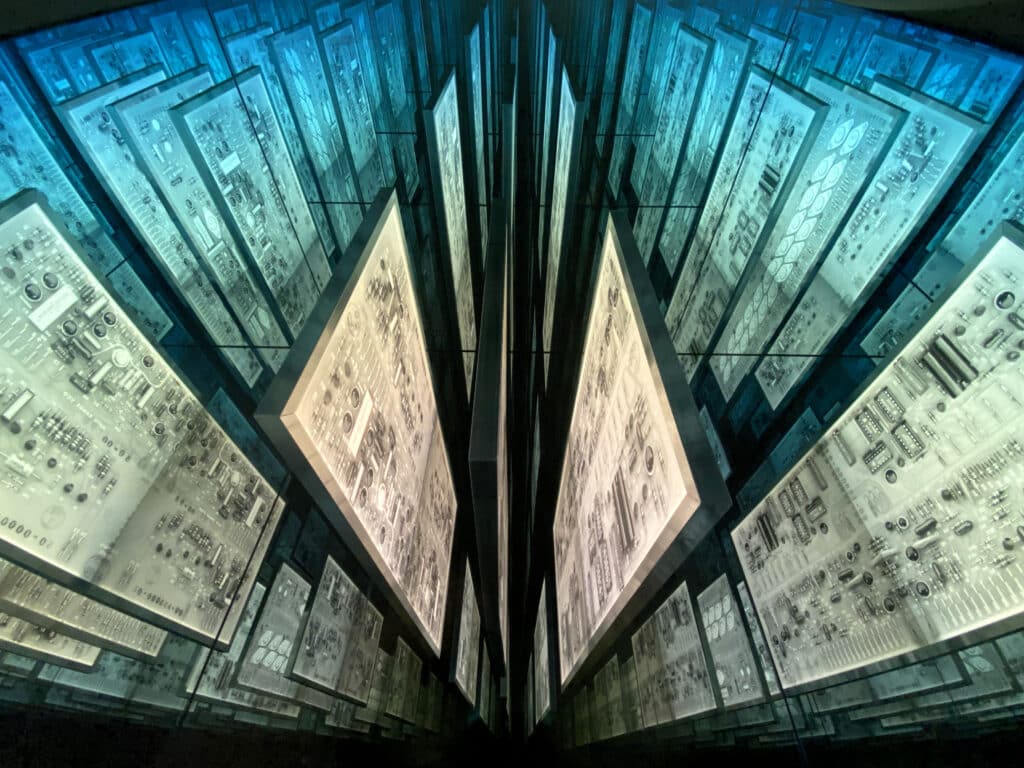
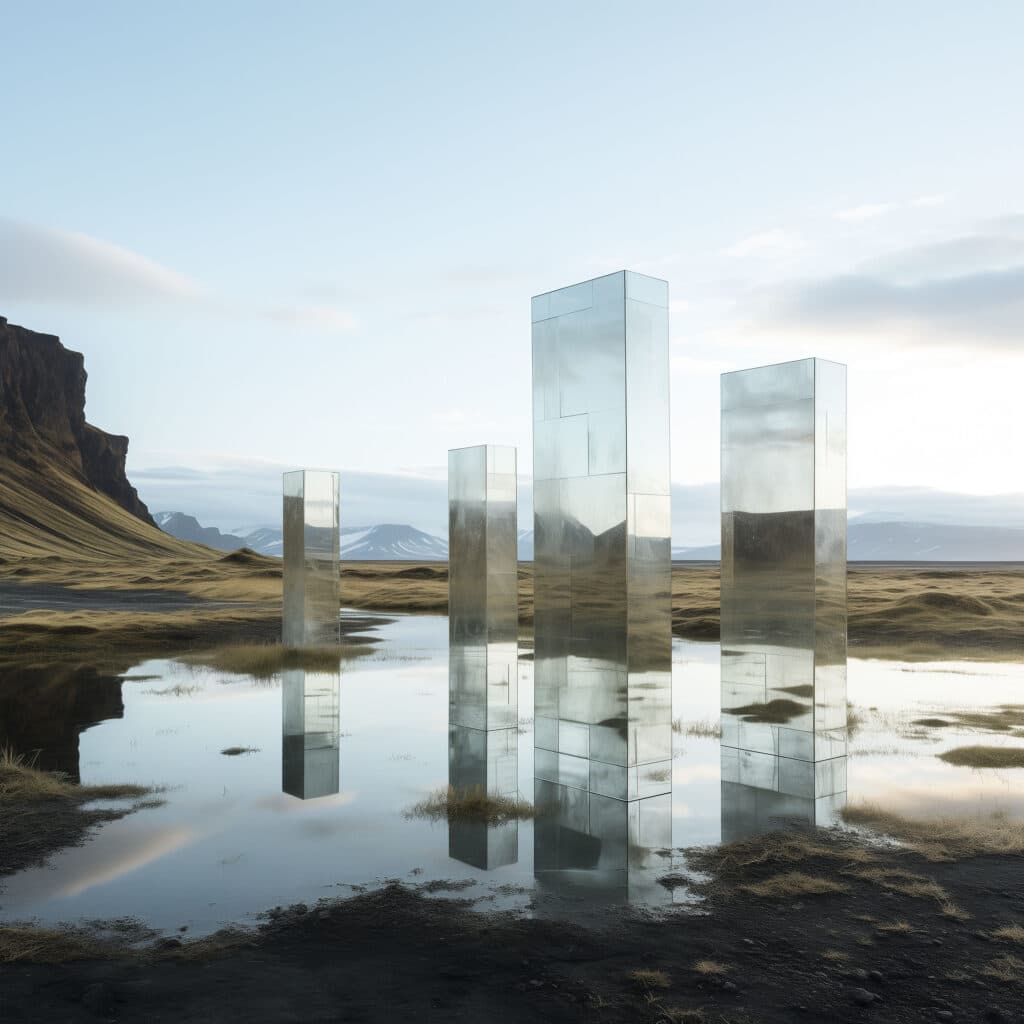
In contrast, Bruce Eesly presents a more critical vision with “New Farmer”, showcased at the Rencontres d’Arles in 2024. His hyperrealistic images depict a dystopian agriculture where technology has replaced nature. “AI is not neutral. It reflects our collective choices, both good and bad,” he warns. Beyond the images, it’s the specter of a dehumanized future that looms.
Is AI ushering in a new era for photography? “The photographic revolution, if we include AI, is simply about reversing the relationship between text and image,” says Michel Poivert. For Le Hangar, this highlights its role as an artistic laboratory, exploring the boundaries of visual creation with a selection of eclectic and daring works, offering an immersive and reflective experience. AImagine provides a fascinating dive into a universe where humans and machines co-create the imagination of tomorrow. This marks the opening of a new chapter, as Michel Poivert summarizes: “What does AI teach us about photography? Perhaps that it was never the art of reality we thought it was. Post-photographers or neo-photographers, or perhaps more aptly, promptographers, the artists here offer an alternative approach to images in the era of the attention economy. For them, we can no longer look without imagining.”
« AImagine », at Le Hangar, in Brussels, Belgium, until June 25, 2025.

